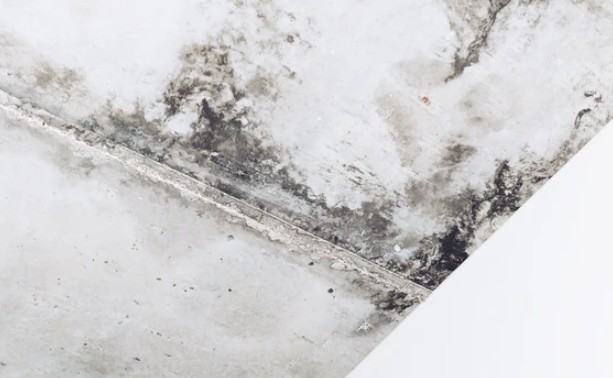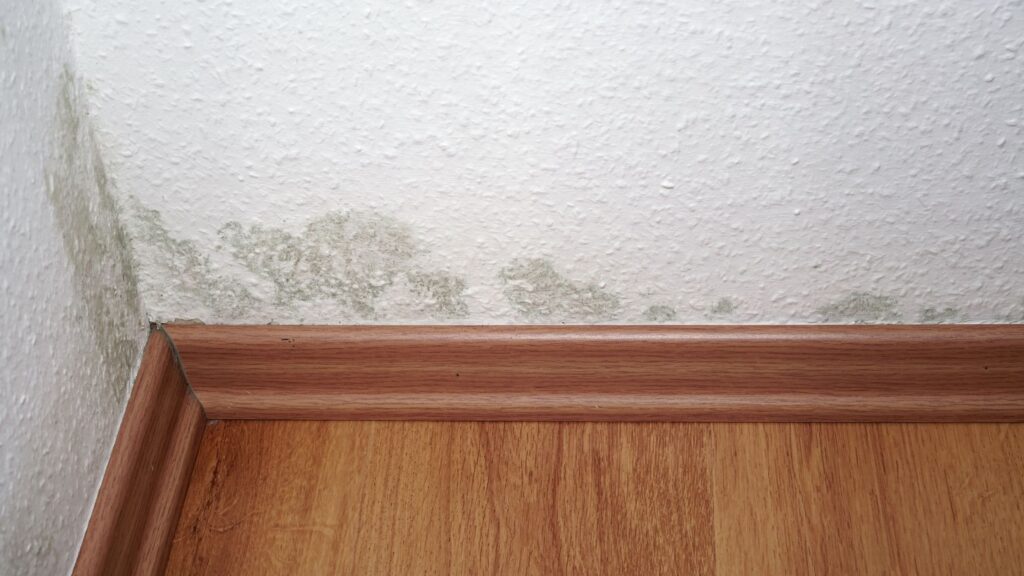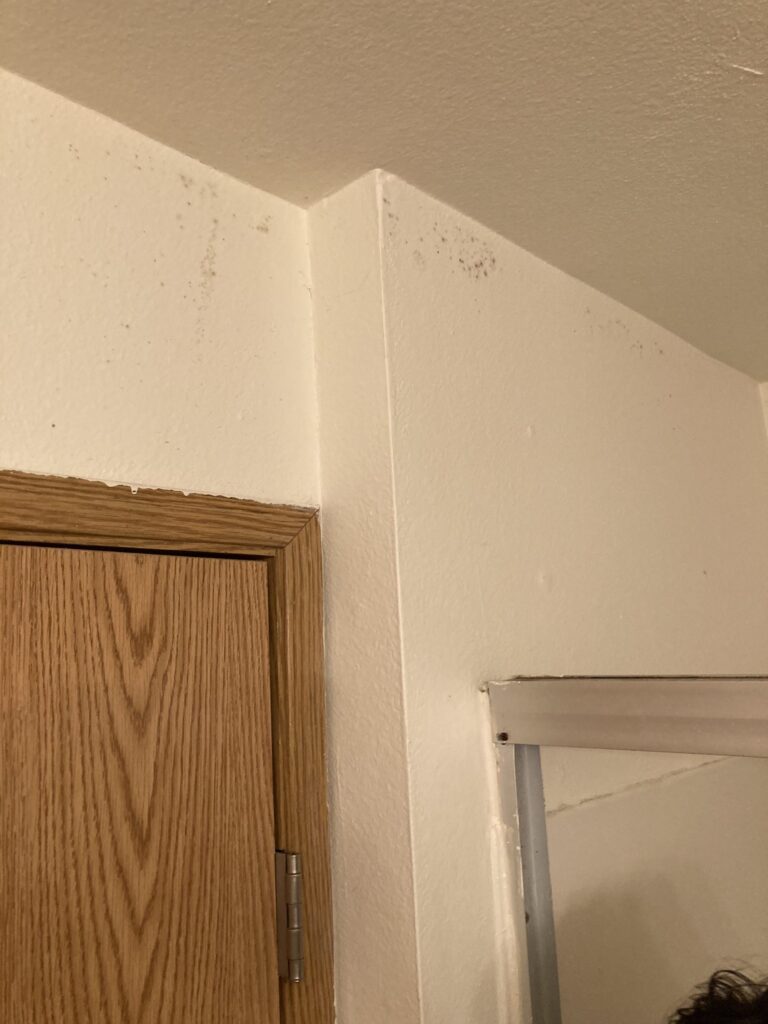Did you know that hidden mold behind walls could potentially be causing you health issues? Mold growth in wall cavities is a common problem that often goes unnoticed until it becomes a severe health hazard. This article explores the potential risks associated with mold behind walls and highlights the symptoms to look out for. Discover the importance of addressing mold issues promptly and ensuring a healthy living environment for you and your loved ones.

Understanding Mold Growth
What is mold?
Mold is a type of fungus that grows in damp and humid environments. It reproduces by forming spores which can become airborne and spread through the air. Mold can grow on various surfaces, including walls, ceilings, fabrics, and even food. It typically appears as black, green, or brown patches, and it thrives in areas with high humidity levels.
Common types of mold
There are several common types of mold that can be found behind walls. Some of the most frequently encountered molds include Aspergillus, Cladosporium, Penicillium, and Stachybotrys chartarum (commonly known as black mold). Each mold type varies in color, texture, and potential health effects. It is important to be aware of the different types of mold to properly address and manage the issue.
Factors that contribute to mold growth
Mold requires certain conditions to grow, and understanding these factors can help prevent its growth. The three main contributors to mold growth are moisture, warmth, and a source of organic material or nutrients. Excessive moisture in the environment can come from leaks, condensation, or high humidity levels. Any organic material such as wood, drywall, or even dust can provide the necessary nutrients for mold to grow. Additionally, insufficient ventilation can allow moisture to accumulate and create the ideal environment for mold growth.
Health Effects of Mold Exposure
Allergic reactions
Exposure to mold, especially for individuals who are sensitive or allergic to it, can lead to a range of allergic reactions. Common symptoms include sneezing, runny nose, nasal congestion, watery eyes, and skin irritation. These allergic reactions are usually mild and can be managed with over-the-counter allergy medications. However, for individuals with severe allergies or asthma, exposure to mold can trigger more serious respiratory issues.
Respiratory issues
Mold exposure may cause or exacerbate respiratory issues, such as coughing, wheezing, and shortness of breath. Individuals with asthma or other respiratory conditions may experience more severe symptoms when exposed to mold. Prolonged exposure to high levels of mold spores or mycotoxins (toxic substances produced by some molds) can lead to chronic respiratory conditions and long-term health problems. It is crucial to address mold growth promptly to prevent these respiratory issues from escalating.
Infections
While less common, certain types of mold can cause infections in individuals with compromised immune systems. Examples include invasive aspergillosis and mycosis, which can affect the respiratory system, skin, or other organs. These infections can be serious and may require medical intervention. People with weakened immune systems, such as those undergoing chemotherapy or with HIV/AIDS, should take extra precautions to avoid mold exposure.

Identifying Mold Behind Walls
Visible signs
Detecting mold behind walls can be challenging, as it is usually hidden from view. However, certain visible signs can indicate its presence. These signs include discoloration or staining on the walls, peeling or bubbling paint or wallpaper, and the presence of dark patches. If you notice any of these signs, it is important to further investigate potential mold growth to prevent further damage and health risks.
Musty odor
One of the most common indicators of mold growth behind walls is a musty or earthy smell. The odor is often described as damp or stale, similar to the smell of a basement or an old, enclosed space. If you detect an unusual odor that persists even after thorough cleaning, it may be a sign of hidden mold growth behind the walls.
Humidity and dampness
High humidity levels and chronic dampness within a building can create the ideal conditions for mold growth behind walls. If you experience frequent condensation on windows, see water stains on walls or ceilings, or notice a general feeling of dampness in certain areas of your home or office, there is a higher likelihood of mold growth. These signs of excess moisture should not be ignored, as they can lead to hidden mold problems that affect your health and well-being.
Testing for Mold Behind Walls
Professional mold testing
When dealing with potential mold growth behind walls, it is advisable to hire a professional mold testing service. These professionals have the expertise and equipment to accurately detect and analyze the extent of mold growth. They can conduct air sampling, surface sampling, and moisture mapping to identify the presence and type of mold. Professional mold testing provides reliable results and helps determine the necessary steps for remediation and prevention.
DIY mold testing kits
For individuals who prefer a more cost-effective approach, DIY mold testing kits are available. These kits typically include test strips, swabs, or collection plates to gather samples. While DIY kits can give you a preliminary indication of mold growth, they may not provide the same level of accuracy and detailed analysis as professional testing. It is important to follow the instructions carefully and interpret the results cautiously.
Interpreting results
Whether through professional testing or DIY kits, it is essential to interpret the mold testing results accurately. Positive results indicate the presence of mold, while negative results suggest the absence of mold or levels below detectable limits. However, it is important to note that mold growth can still be present, even with negative test results. If you suspect mold growth based on visible signs or odor, it may be necessary to seek professional assistance for further evaluation.

Remediation and Prevention
Removing mold from walls
Once mold growth behind walls has been identified, it is crucial to address it promptly to prevent further damage and health risks. Depending on the extent of the mold growth, professional mold remediation may be necessary. Trained professionals will safely remove the affected materials, clean the area, and apply appropriate antimicrobial treatments to prevent regrowth. In some cases, it may be possible to handle small-scale mold removal yourself, following proper safety precautions and using effective cleaning techniques.
Preventing mold growth
Prevention is key when it comes to mold growth behind walls. To minimize the risk of mold, it is important to control indoor humidity levels, address any leaks promptly, and ensure proper ventilation throughout your living or working space. Using dehumidifiers, fixing plumbing issues, and improving insulation can help create an environment less conducive to mold growth. Regularly inspecting vulnerable areas such as bathrooms, kitchens, and basements can also help identify and address potential mold problems early.
Improving ventilation
Proper ventilation is essential in preventing mold growth. Ensure that your home or office is well-ventilated by using exhaust fans in kitchens and bathrooms to remove excess humidity. Opening windows and doors whenever possible can also promote air circulation and reduce moisture buildup. Additionally, utilizing air purifiers or investing in HVAC systems with mold-resistant filters can help maintain clean and healthy indoor air quality.
Hiring Mold Remediation Professionals
What to look for in a mold remediation company
When hiring mold remediation professionals, it is important to choose a reputable and experienced company. Look for certifications from organizations such as the Institute of Inspection, Cleaning and Restoration Certification (IICRC) or the National Organization of Remediators and Mold Inspectors (NORMI). These certifications indicate that the company follows industry best practices and has received proper training in mold remediation. Reading reviews, checking references, and verifying insurance coverage are additional steps to ensure you are hiring a reliable and trustworthy company.
Costs and insurance coverage
The cost of professional mold remediation can vary depending on factors such as the extent of the mold growth, location, and the specific services required. It is recommended to obtain multiple quotes from different mold remediation companies to compare prices and services. Additionally, it is crucial to check if your homeowner’s insurance policy covers mold remediation. Some policies may provide coverage based on the cause and extent of the mold damage. Review your insurance policy carefully and consult with your insurance provider to determine the coverage options available to you.

Addressing Health Concerns
Seeking medical attention
If you suspect that mold exposure has impacted your health, it is important to seek medical attention. Consult with your healthcare provider, who can assess your symptoms, conduct relevant tests, and recommend appropriate treatment if necessary. They may refer you to an allergist or other specialists for further evaluation. Prompt medical attention is especially crucial for individuals with underlying health conditions or compromised immune systems.
Managing symptoms
While waiting for medical evaluation or during the remediation process, you can take steps to manage your symptoms. Over-the-counter antihistamines can help alleviate allergic reactions, such as sneezing and itching. Using saline nasal sprays or rinses can provide relief for nasal congestion and irritation. It is also important to keep the affected areas well-ventilated and minimize exposure to mold spores by wearing a mask and gloves when necessary.
Long-term effects
Long-term effects from mold exposure can vary depending on the individual and the severity of the exposure. Some individuals may experience persistent respiratory issues, chronic allergies, or ongoing fungal infections. It is crucial to monitor your health and seek regular follow-ups with your healthcare provider, especially if you have a history of mold exposure. Taking proactive measures to prevent mold growth and practicing good indoor air quality habits can significantly reduce the risk of long-term health effects.
Legal and Insurance Considerations
Tenant rights
If you are a tenant and discover mold growth behind walls, it is important to understand your rights. The specific rights and responsibilities concerning mold vary depending on local laws and lease agreements. In many cases, landlords are legally obligated to address mold issues promptly and maintain a safe living environment. Documenting the mold growth, notifying the landlord in writing, and keeping records of communication can help protect your rights and ensure proper remediation measures are taken.
Homeowner’s insurance coverage
Homeowner’s insurance policies typically cover certain types of water damage, which may include mold remediation. However, coverage may vary depending on the cause of the mold growth and specific policy terms. Some policies explicitly exclude mold-related damages or have limitations on coverage amounts. Reviewing your homeowner’s insurance policy and discussing the coverage details with your insurance provider will ensure you understand your rights and potential insurance benefits.
Filing a claim
If you have experienced mold growth that requires remediation and believe that it is covered by your insurance policy, you may need to file a claim. Document the extent of the mold growth, take photos, and keep records of any communication with mold remediation professionals, doctors, and insurance representatives. Follow the necessary steps outlined by your insurance provider, and provide all the requested documentation and evidence to support your claim. Understanding the process and seeking guidance from a professional if needed can help navigate the claims process more effectively.

DIY Mold Remediation
When to tackle mold removal yourself
In some cases, small-scale mold removal can be handled by homeowners or tenants themselves. This is usually appropriate when the affected area is less than 10 square feet and the individual is comfortable following safety guidelines and using appropriate protective equipment. However, it is important to be cautious and not attempt removal if there are underlying health conditions, extensive mold growth, or uncertainty about the type of mold present. When in doubt, consulting with a professional mold remediation company is always recommended.
Safety precautions and equipment
Before initiating any DIY mold remediation, it is crucial to prioritize safety. Wear protective clothing such as gloves, goggles, and a mask to minimize exposure to mold spores. Ensure the area is well-ventilated by using fans or opening windows. Avoid causing further damage or spreading mold spores by carefully removing any affected materials. Clean the area thoroughly using appropriate mold cleaning solutions and follow recommended procedures for proper disposal. It is important to be thorough and diligent to minimize the risk of recurring mold growth or inadequate removal.
Effective DIY methods
There are several effective DIY methods for mold removal, depending on the severity and surface affected. Mixtures of vinegar, hydrogen peroxide, or bleach diluted with water can be effective for cleaning moldy surfaces. Scrubbing with a brush or sponge and ensuring thorough drying afterward can help prevent regrowth. For porous materials like drywall or upholstery that cannot be effectively cleaned or dried, it may be necessary to remove and replace the affected sections. Researching proper techniques and consulting reliable sources or professionals can help ensure you choose the most effective DIY method for your specific situation.
Conclusion
Understanding the impact of mold growth behind walls is essential for maintaining a healthy environment. Mold exposure can lead to a range of health issues, from allergic reactions to respiratory problems and infections. Identifying mold growth through visible signs, musty odors, and monitoring humidity levels is the first step in addressing the problem. Professional mold testing or DIY kits can provide further insight into the extent and type of mold present. Once mold growth has been detected, swift remediation is necessary, either through professional services or appropriate DIY methods. Taking proactive steps to prevent mold growth, improving ventilation, and addressing any health concerns promptly are vital for creating a safe and healthy living or working environment. Understanding legal and insurance considerations, as well as the availability of DIY mold remediation, provides homeowners and tenants with comprehensive knowledge to tackle mold issues effectively. By addressing mold behind walls and implementing preventive measures, you can ensure a healthy indoor environment for you and your loved ones.